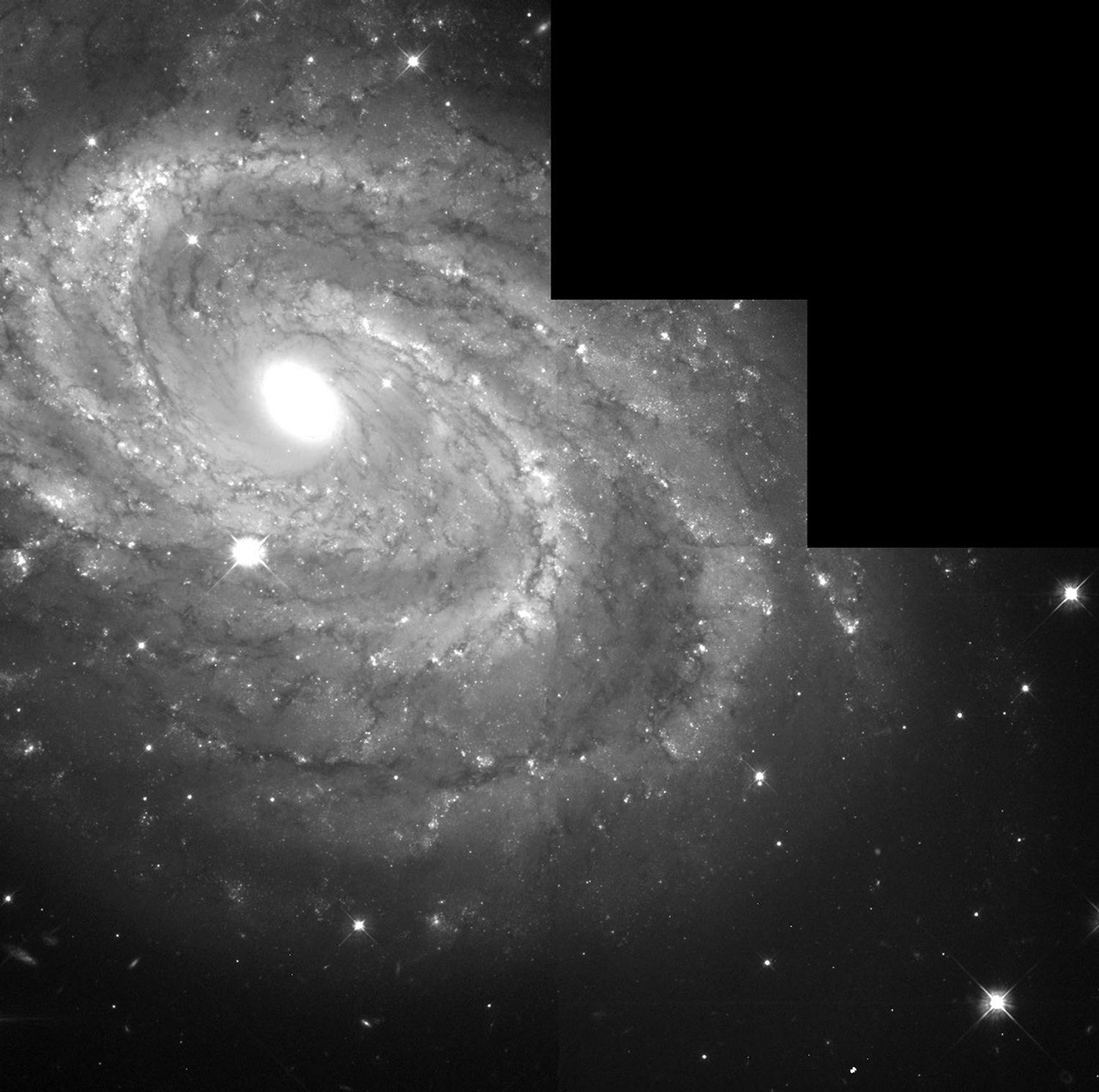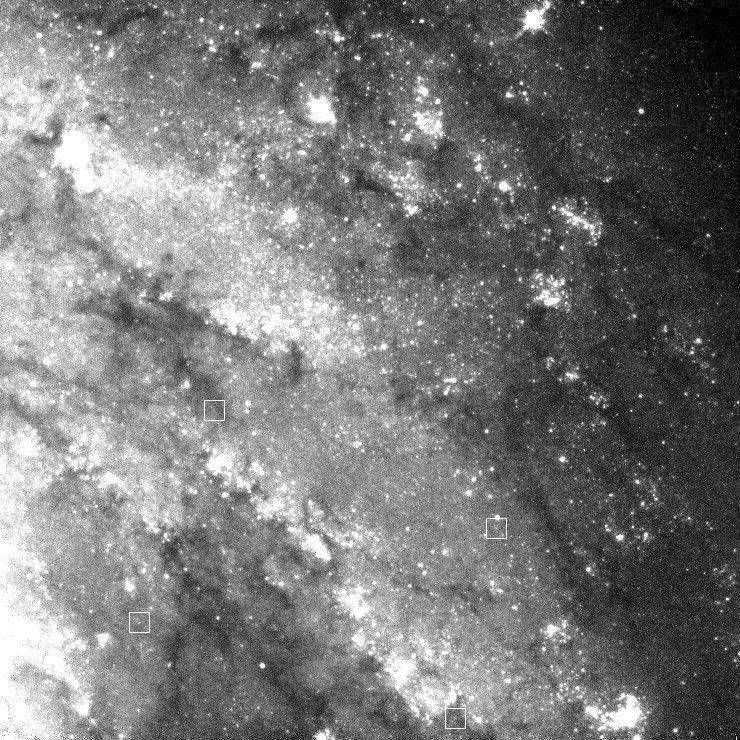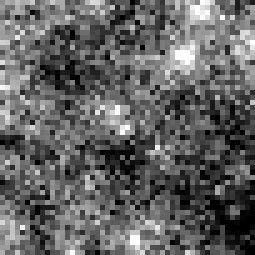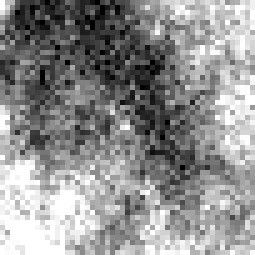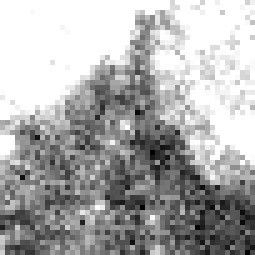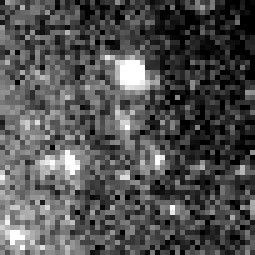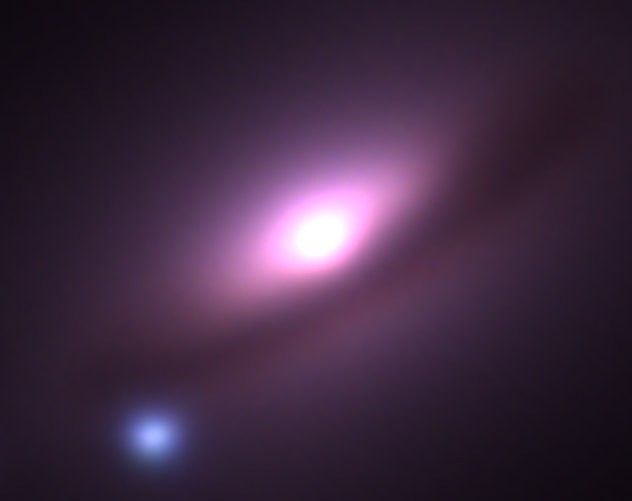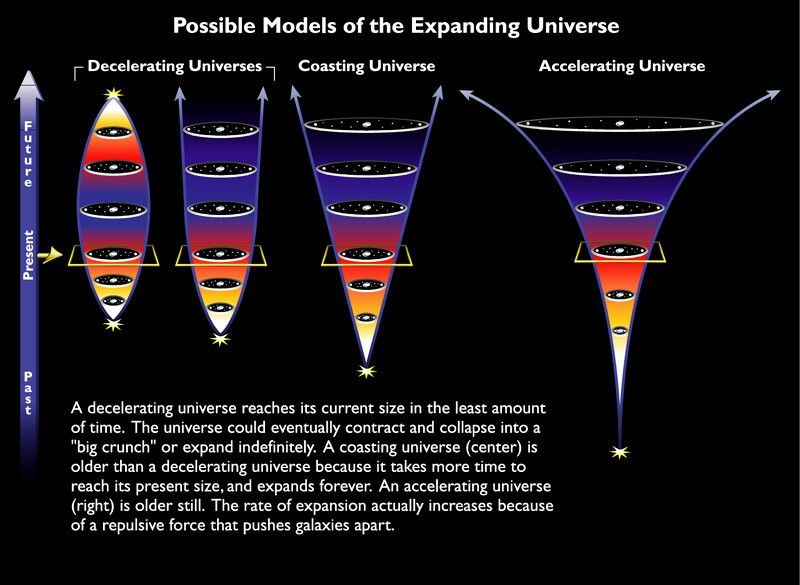1 min read
Distant Spiral Galaxy NGC 4603, Home to Variable Stars

A NASA Hubble Space Telescope (HST) view of the magnificent spiral galaxy NGC 4603, the most distant galaxy in which a special class of pulsating stars called Cepheid variables have been found. It is associated with the Centaurus cluster, one of the most massive assemblages of galaxies in the nearby universe. The Local Group of galaxies, of which the Milky Way is a member, is moving in the direction of Centaurus at a speed of more than a million miles an hour under the influence of the gravitational pull of the matter in that direction.
Clusters of young bright blue stars highlight the galaxy's spiral arms. In contrast, red giant stars in the process of dying are also found. Only the very brightest stars in NGC 4603 can be seen individually, even with the unmatched ability of the Hubble Space Telescope to obtain detailed images of distant objects. Much of the diffuse glow comes from fainter stars that cannot be individually distinguished by Hubble. The reddish filaments are regions where clouds of dust obscure blue light from the stars behind them.
This galaxy was observed by a team affiliated with the HST Key Project on the Extragalactic Distance Scale. Because NGC 4603 is much farther away than the other galaxies studied with Hubble by the Key Project team, 108 million light-years, its stars appear very faint from the Earth, and so accurately measuring their brightness, as is required for distinguishing the characteristic variations of Cepheids, is extremely difficult. At this distance some non-variable stars may by chance appear to grow brighter and fainter in the same fashion as Cepheids due to the physical impossibility of perfect measurements of such dim objects. Determining the distance to the galaxy required an unprecedented statistical analysis based on extensive computer simulations.
Researchers found 36-50 Cepheids and used their observed properties to securely determine the distance to NGC 4603. These measurements indicate that when the expansion of the universe and the motion of the Local Group are accounted for, the Centaurus cluster is very nearly at rest compared with the surrounding regions. It is part of the cause of the rapid motions in the nearby universe, rather than being strongly pulled by other concentrations of matter. Observations of distant Cepheids such as those in NGC 4603 also help astronomers to precisely measure the expansion rate of the universe.
About the Object
- R.A. PositionR.A. PositionRight ascension – analogous to longitude – is one component of an object's position.12h 40m 55.69s
- Dec. PositionDec. PositionDeclination – analogous to latitude – is one component of an object's position.-40° 58' 33.99"
- ConstellationConstellationOne of 88 recognized regions of the celestial sphere in which the object appears.Centaurus
- DistanceDistanceThe physical distance from Earth to the astronomical object. Distances within our solar system are usually measured in Astronomical Units (AU). Distances between stars are usually measured in light-years. Interstellar distances can also be measured in parsecs.108 million light-years (33 million parsecs)
About the Data
- InstrumentInstrumentThe science instrument used to produce the data.HST>WFPC2
- Exposure DatesExposure DatesThe date(s) that the telescope made its observations and the total exposure time.May - July, 1996; June - July, 1997
- Object NameObject NameA name or catalog number that astronomers use to identify an astronomical object.NGC 4603
- Object DescriptionObject DescriptionThe type of astronomical object.Spiral Galaxy
- Release DateMay 25, 1999
- Science ReleaseHubble Completes Eight-Year Effort to Measure Expanding Universe
- CreditJeffrey Newman (Univ. of California at Berkeley) and NASA
Related Images & Videos
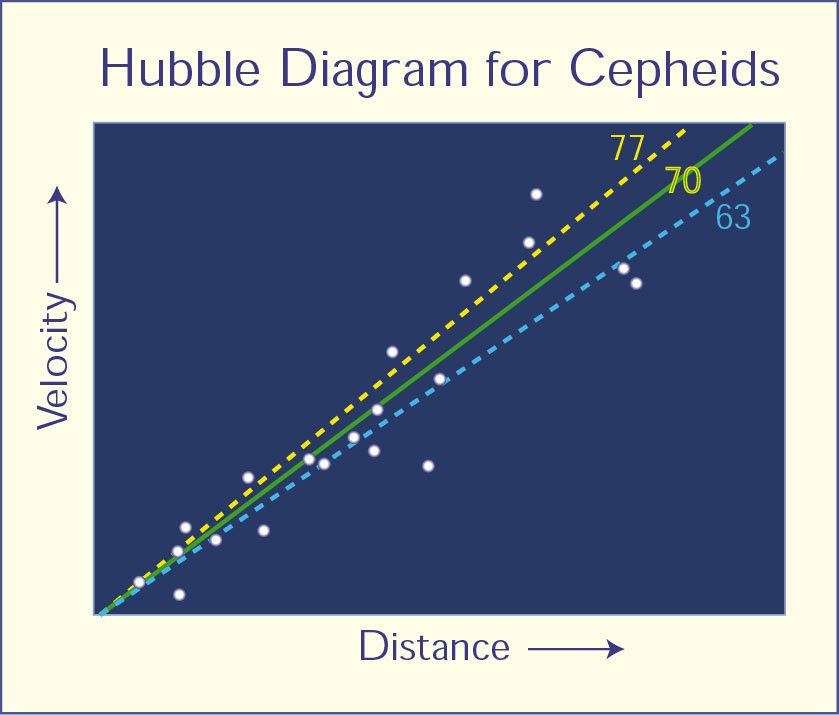
Hubble Diagram for Cepheids
Hubble Diagram for Cepheids This is a plot of galaxy distance versus the velocity that the galaxy appears to be receding from Earth. It is based on data collected by the Hubble Space Telescope Key Project team. The distances have been measured using Cepheid variables. The slope...
Share
Details
Claire Andreoli
NASA’s Goddard Space Flight Center
Greenbelt, Maryland
claire.andreoli@nasa.gov

























